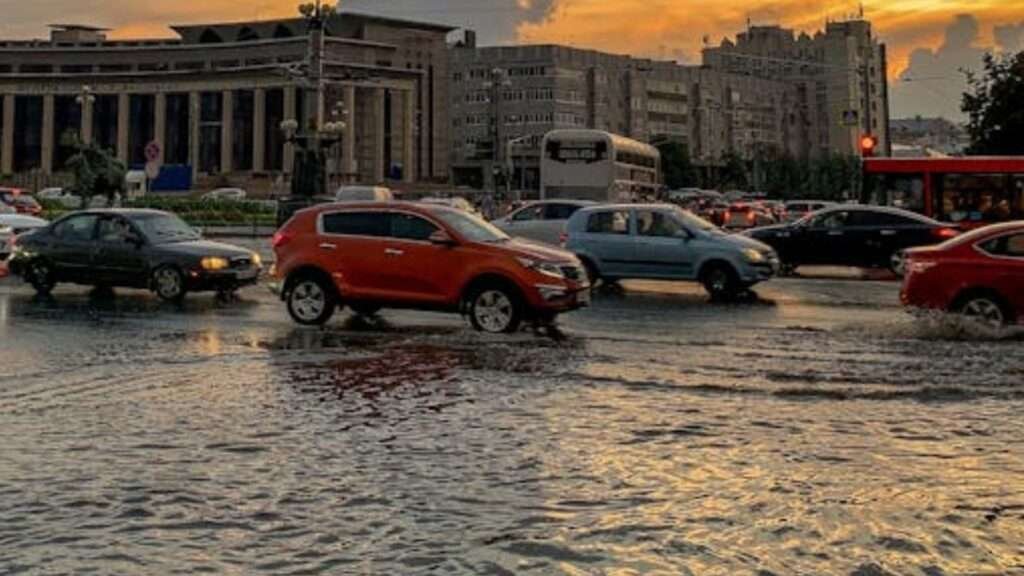Stormwater, Wastewater and Sewage Systems Maintenance.
Local governments and shire councils have a crucial responsibility in maintaining stormwater, wastewater and sewage systems.
These systems play a vital role in ensuring public health, environmental protection, and community well-being.
Without proper maintenance, these systems can become inefficient, leading to issues such as blockages, flooding, various health hazards and sewage spills.
Over the course of this article, I’ll be exploring a few software products that are available to be used by local governments and shire councils to efficiently and effectively manage stormwater and sewerage systems maintenance.
I’ll also take a look at what is required with this type of work as well.
Stormwater, wastewater and sewerage systems are designed to collect and transport stormwater, wastewater and sewage away from urban areas to facilities designed to handle and treat these solutions.
Over time, these systems and related treatment facilities can deteriorate due to factors such as aging infrastructure, wear and tear, corrosion and other causes of failures.
To address these challenges, local governments/shire councils have turned to software solutions to streamline the maintenance of stormwater and sewerage systems.
These software products offer a range of features and functionalities that enable efficient planning, monitoring, and maintenance of these critical infrastructure assets.
Stormwater Management Software from Novo Solutions.
This software provides local governments and shire councils with a comprehensive platform to manage all aspects of stormwater system maintenance.
It allows users to create and update asset inventories, schedule and track maintenance activities, and generate reports on system performance.
With this software, local governments can proactively identify and address potential issues before they become major problems.
Sewerage Management Could Software by iWorQ.
This software is specifically designed to assist local governments and shire councils in managing the maintenance of sewerage systems.
It offers features such as real-time monitoring of system performance, automated scheduling of maintenance tasks, and integration with GIS mapping systems.
By using this software, local governments can ensure the efficient operation of their sewerage systems and minimize the risk of sewage spills.
Fiix Software from Rockwell Automation.
This software provides local governments and shire councils with a centralized platform to manage all their infrastructure assets, including stormwater and sewerage systems.
It offers features such as asset tracking, maintenance planning, and budgeting tools. With this software, local governments can optimise their asset management processes and allocate resources effectively.
Tasks Involved in Stormwater and Sewerage Systems Maintenance.
Maintaining stormwater and sewerage systems involves a range of tasks to ensure their efficient operation.
The key tasks involved in stormwater, wastewater and sewerage systems maintenance are many and varied.
Storm & Waste Water System Maintenance Tasks.
1) Clearing Debris and Sediment: Regularly removing debris, sediment, and trash from stormwater pipes, inlets, and culverts is essential to prevent blockages and ensure proper water flow.
a. Shire Councils need to keep grates clear to allow water to enter the system without any hindrance.
b. This task often involves the use of specialized equipment such as vacuum trucks and high-pressure water jets to effectively clean the stormwater infrastructure.
2) Vegetation Management: Mowing grass areas and swales regularly helps prevent overgrowth, which can obstruct the flow of stormwater.
a. Canals and ditches should be checked for signs of erosion, and vulnerable areas should be stabilized with plantings or sod to prevent further damage.
b. In addition to regular mowing, periodic inspections are conducted to identify and remove invasive plant species that can negatively impact the stormwater system.
3) Pond and Lake Maintenance: Wet ponds and lakes need regular maintenance to remove trash, dead vegetation, and debris.
a. Proper functioning of these water bodies is crucial to prevent backups and flooding during heavy rainfall events.
b. Maintenance tasks include manual or mechanical removal of accumulated sediment, vegetation management around the edges, and ensuring the structural integrity of the pond or lake walls.
4) Water Quality Monitoring: Monitoring the quality of stormwater runoff is an important aspect of stormwater system maintenance.
a. Regular water sampling and analysis are conducted to identify potential pollutants and ensure compliance with environmental regulations.
b. This involves collecting samples from various points within the stormwater system and analysing them for parameters such as pH, turbidity, dissolved oxygen, and the presence of contaminants.
Sewerage System Maintenance Tasks.
1) Inspection and Repair: Regular inspections of sewer lines are necessary to identify cracks, leaks, and blockages.
a. Minor repairs should be performed promptly to maintain the integrity of the system and prevent further damage.
b. Inspection techniques such as closed-circuit television (CCTV) cameras and smoke testing are used to assess the condition of the sewer lines and identify any potential issues.
2) Cleaning and Clearing: Sewer lines can get clogged with debris, roots, and other obstructions over time.
a. Regular cleaning and clearing of these lines are essential to prevent build-up, avoid backups, and minimize the risk of sewage spills.
b. High-pressure water jetting and mechanical rodding are commonly used methods to clear blockages and remove accumulated debris from the sewer lines.
3) Monitoring and Control: Implementing monitoring systems helps detect abnormalities in wastewater flow rates and pressure.
a. By closely monitoring these parameters, local authorities can take timely action to prevent overloading and potential system failures.
b. Advanced technologies such as flow meters, level sensors, and telemetry systems enable real-time monitoring and provide valuable data for proactive maintenance and system optimisation.
4) 4. Emergency Response: Addressing sewer system emergencies promptly is crucial to minimize the impact on public health and the environment.
a. Local authorities need to coordinate with emergency services and repair crews to resolve issues such as pipe bursts, leaks, and other critical incidents.
b. Emergency response plans are developed to ensure a swift and effective response during such situations, including the availability of standby equipment and personnel.
Wastewater System Maintenance Tasks.
Wastewater is a broad term that encompasses any water that has been used for domestic, commercial, or industrial purposes and is no longer suitable for its intended use.
It includes water from sinks, showers, washing machines, stormwater runoff, agricultural runoff, and industrial processes.
As our population grows and urban areas expand, the management of wastewater becomes an increasingly crucial responsibility for local governments and shire councils.
The Role of Local Governments and Shire Councils with Wastewater.
Local governments and shire councils play a vital role in ensuring the proper maintenance of wastewater systems.
These systems are responsible for collecting, treating, and disposing of wastewater in a safe and environmentally friendly manner.
Without regular maintenance, these systems can become inefficient, leading to the potential for pollution and health hazards.
One of the primary responsibilities of local governments and shire councils is to ensure that wastewater treatment facilities are operating effectively.
These facilities are designed to remove pollutants and contaminants from wastewater before it is discharged into the environment.
Regular maintenance and monitoring are essential to ensure that these facilities are functioning optimally.
The Importance of Wastewater Systems Maintenance.
Regular maintenance of wastewater systems is crucial for several reasons as follows:
1. Environmental Protection: Wastewater treatment is necessary to protect our environment and water sources.
a. If wastewater is not properly treated before being discharged, it can contaminate rivers, lakes, and groundwater, leading to the pollution of ecosystems and potential harm to human health.
b. Regular maintenance ensures that treatment facilities are functioning correctly and effectively removing pollutants.
2. Public Health and Safety: Proper wastewater treatment is essential for safeguarding public health and safety.
a. Untreated or poorly treated wastewater can contain harmful pathogens, chemicals, and other contaminants that pose a risk to human health.
b. By maintaining wastewater systems, local governments and shire councils can ensure that the water we use for drinking, bathing, and recreational activities remains safe and free from harmful pollutants.
3. Infrastructure Longevity: Regular maintenance helps prolong the lifespan of wastewater infrastructure.
a. By identifying and addressing issues early on, local governments and shire councils can prevent costly repairs and replacements in the future.
b. This proactive approach not only saves money but also ensures that wastewater systems continue to operate efficiently, meeting the needs of growing populations and evolving environmental regulations.
4. Compliance with Regulations: Local governments and shire councils have a legal obligation to comply with wastewater regulations and standards.
a. Regular maintenance of wastewater systems helps ensure that these regulations are met.
b. By staying up to date with maintenance requirements, local authorities can avoid penalties and legal issues associated with non-compliance.
Stormwater, Wastewater & Sewage Systems Maintenance Key Points.
It is crucial for Local Governments/Shire Councils to prioritise the maintenance of stormwater, wastewater, and sewage systems within their jurisdictions.
These systems play a vital role in ensuring the health, safety, and well-being of your community.
However, evaluating the yearly requirements for maintenance can be a complex task.
To assist you in this process, I’ve throw together my top six takeaways that shire councils should consider when evaluating these requirements.
1) Regular Inspections and Assessments: To effectively maintain stormwater, wastewater, and sewage systems, regular inspections and assessments are essential.
a. Conducting thorough inspections allows you to identify potential issues early on and take proactive measures to address them.
b. By assessing the condition of these systems, you can prioritise maintenance tasks based on urgency and allocate resources accordingly.
c. Consider implementing a comprehensive inspection schedule that covers all components of the systems, including pipes, pumps, storage tanks, and treatment facilities.
d. This will help you identify any signs of wear and tear, blockages, or other maintenance needs.
2) Budget Allocation: Proper budget allocation is crucial for the effective maintenance of stormwater, wastewater, and sewage systems.
a. Shire councils must allocate sufficient funds to cover routine maintenance tasks as well as unexpected repairs or upgrades.
b. By having a well-planned budget, you can ensure the longevity and functionality of these systems.
c. Consider conducting a cost analysis to determine the estimated expenses for maintenance activities.
d. This analysis should include factors such as labor costs, equipment and material expenses, and any external contractor fees.
e. By having a clear understanding of the budget required, you can make informed decisions and avoid any financial constraints.
3) Prioritisation of Maintenance Tasks: Not all maintenance tasks are created equal.
a. Some tasks may require immediate attention, while others can be deferred to a later date.
b. It is crucial to prioritise maintenance tasks based on their impact on the overall functionality and safety of the stormwater, wastewater, and sewage systems.
c. Consider categorizing maintenance tasks into different levels of urgency. This will help you allocate resources efficiently and address critical issues promptly.
d. Additionally, consider the potential consequences of delaying certain tasks and weigh them against the available resources.
4) Collaboration with Experts and Professionals: Maintaining stormwater, wastewater, and sewage systems requires specialized knowledge and expertise.
a. Collaborating with experts and professionals in the field can provide valuable insights and guidance in evaluating yearly maintenance requirements.
b. Consider establishing partnerships with engineering firms, environmental consultants, or other relevant professionals.
c. They can assist you in conducting assessments, developing maintenance plans, and implementing best practices.
d. Their expertise will ensure that your maintenance efforts are effective and aligned with industry standards.
5) Embracing Technological Advancements: Technology has revolutionized various industries, and the maintenance of stormwater, wastewater, and sewage systems is no exception.
a. Embracing technological advancements can streamline maintenance processes, improve efficiency, and reduce costs.
b. Consider exploring innovative solutions such as remote monitoring systems, predictive maintenance software, or data analytics tools.
c. These technologies can provide real-time insights into the condition of the systems, identify potential issues before they escalate, and optimise maintenance schedules.
6) Community Engagement and Education: Engaging with the community and educating them about the importance of stormwater, wastewater, and sewage systems maintenance is crucial.
a. By fostering a sense of ownership and responsibility, you can encourage the community to report any issues promptly and take necessary precautions to prevent system failures.
b. Consider organizing workshops, seminars, or awareness campaigns to educate the community about the significance of these systems and how they can contribute to their proper maintenance.
c. Encourage open communication channels and provide resources for reporting any maintenance concerns.
Conclusion.
Local governments/Shire Councils bear primary responsibility for the maintenance of wastewater, stormwater, and sewage systems.
Shire Councils can protect the environment, promote public health and safety, extend the life of related infrastructure, and comply with regulations by prioritising regular maintenance.
It’s important to remember that these tasks necessitate significant effort and resources from local governments/shire councils.
They contribute to the overall well-being of their communities by prioritising stormwater, wastewater, and sewerage system maintenance, as well as ensuring that these critical infrastructure systems operate efficiently.
Regular maintenance not only increases the lifespan of stormwater, wastewater, and sewerage systems, but it also helps to reduce the risks of flooding, water pollution, and public health hazards.





